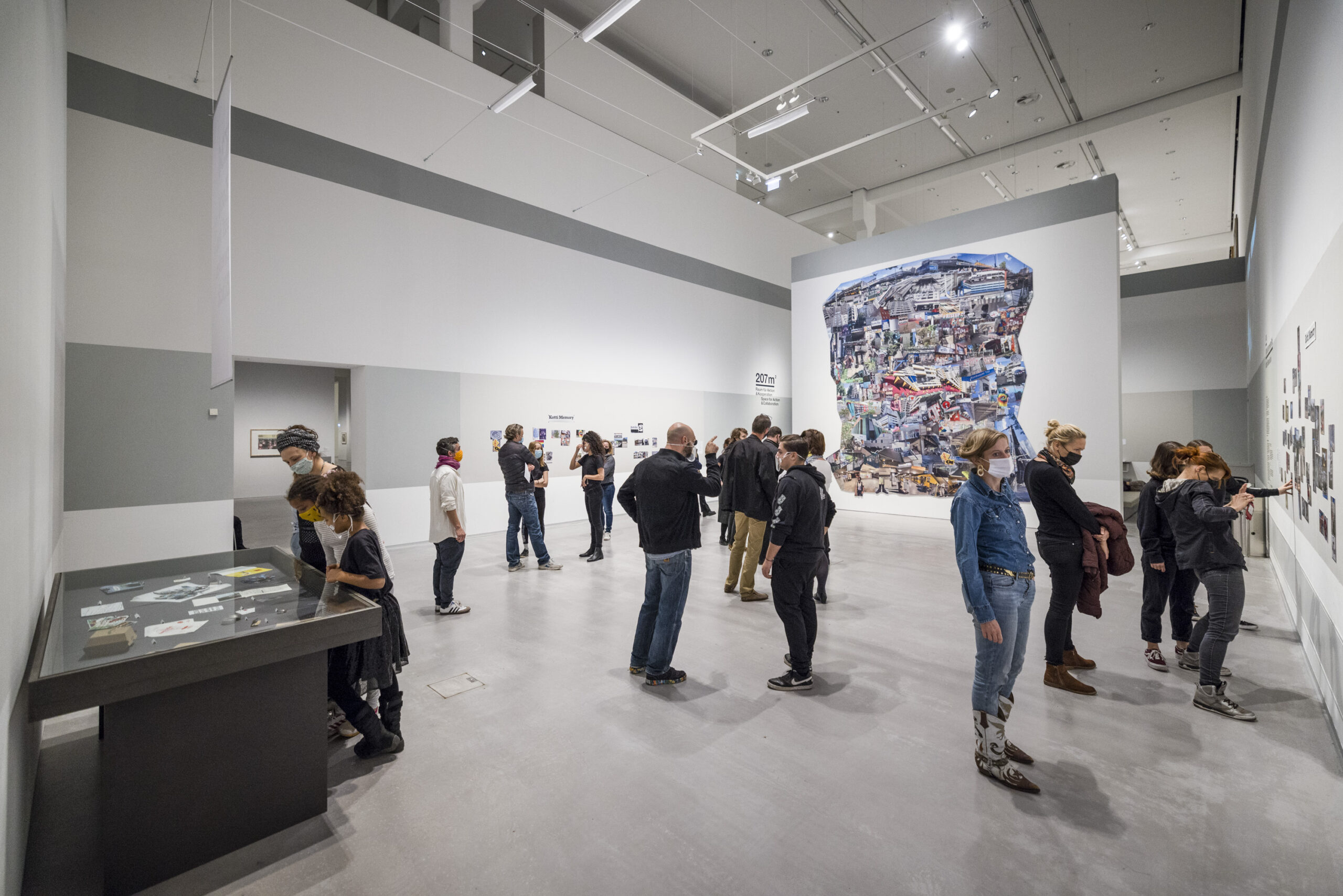The pharmacy is a place of medicine and knowledge. The city bears disease, wounds, scars and ailments. What defines a city pharmacy?
In this intergenerational artistic research project, students from the Nürtingen primary school together with their teacher, sideviews artists, the Schattenmuseum youth committee and two retired pharmacists investigate plants and other remedies in the urban space. In an exploration of the city’s pressure points, the city pharmacy collects, archives and publishes knowledge. In addition to this custodianship of interest in (medicinal) plants and habitats, it preserves old knowledge both for future generations to activate self-healing powers and also to ensure that healing is not left exclusively in the hands of other. Plant ambassadors exhibit the resulting plant archives in a variety of ways: a combination of experimental, choral, choreographic and research tools creates a walk-in interactive space – a living archive. The presentation is supported by a guest appearance by the one-off play garments from Berlin Marzahn-Hellersdorf.
The city pharmacy was presented as an interactive exhibition and performance as part of the Schools of Tomorrow festival on November 18-19, 2021 in the House of World Cultures in Berlin.
Here you find our VIDEO DOCUMENTATION (in German language).
More information at
https://www.hkw.de/en/programm/projekte/2021/schools_of_tomorrow_2021/start.php
https://www.hkw.de/en/programm/projekte/2021/schools_of_tomorrow_2021/schulprojekte_schools_of_tomorrow_3/nuertingen_schule.php
https://www.hkw.de/en/programm/projekte/veranstaltung/p_187763.php
STADTAPOTHEKE is a project by and with
Alaa Asmin Ava Bedirhan Béla Cem Eddie Elijah Elisa Elona Emir Han Ena Hiranur Inés Jacek Josef Karla Lino Mariama Mohammed Saleh Niya Oghuzan Pauline Puma Raziye Robert Romy Selma Suvi Tuana Tunç Vito Zamiel Zahraa Abdul-Hamid Silke Ballath Hannelore Eckert Dr. Wilma Florath Wiebke Janzen Monika Kegel Seraphina Lenz Dr. Hans-Heino Luxa Tomma Luxa Kirsten Müller Bodo Orejuela Anja Paetsch Carla Petermann Ilka Saegebarth Anja Scheffer Moritz Scheffer

















